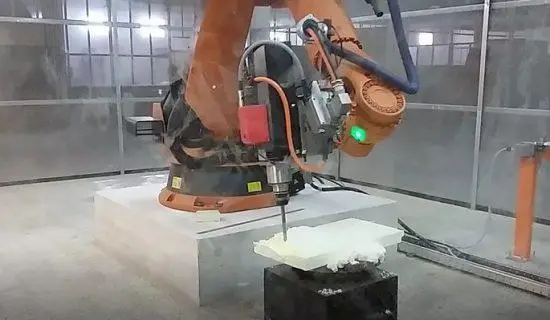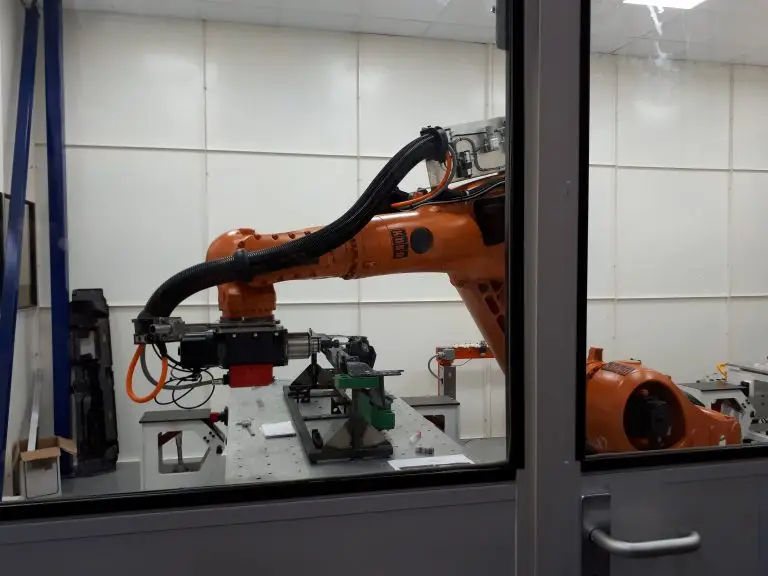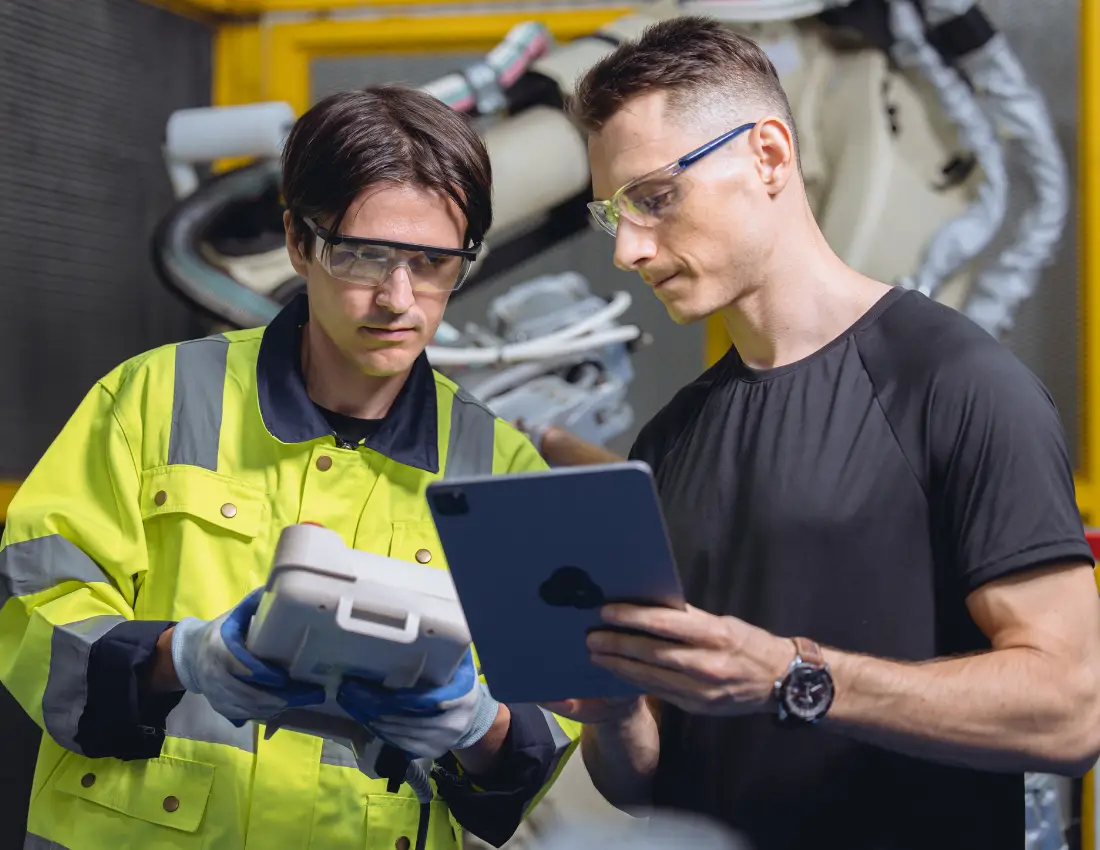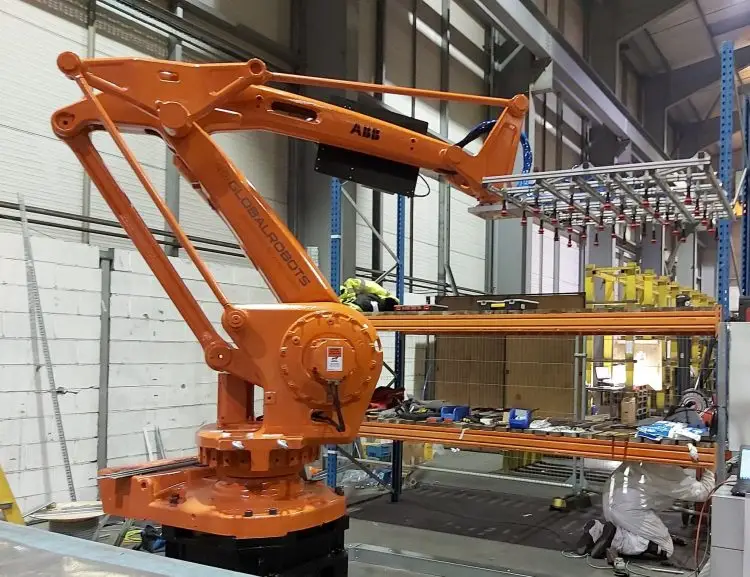
Robotic milling involves adding the flexibility to replace a traditional CNC machine
Robot milling can now replace a machine tool in certain applications, bringing a high level of flexibility to use different tools in the 3D space. First of all, Robots are capable of producing the highest quality complex and unusual geometries parts. For example, robotic milling systems can have flexible tooling for specific material removal.
Robot Milling can process a variety of different materials from alloys to plastics and from foams to timber. As a result, a robot is capable of milling any object of any size or shape by just adjusting the robot programming and end-of-arm-tooling.
Why work with an industrial robot?
Milling automation is a fairly new application for robots and is not widely used. However, programming is still a big challenge because the robot’s programming software does not support automatically the programming of multiple tasks and spline-geometry.
By using CAM or robot simulation software, we have the advantage that we can use the CAM strategy of contour milling, the end mill can follow the splines according to the surface normal.

Robotic milling is advantageous in several aspects
- Increase Flexibility – Robotic milling greatly increases the flexibility of milling.
- Lower Cost – Robot milling can be cheaper than CNC.
- Through the flexibility in a workspace, the robot supports undercuts and can work from all directions.
- A further advantage is the (non-cubic) workspace. In contrary to portal milling machines, a robot does not operate within a fixed frame.
- Calibration and self-reference of the robot: the robot can reference its own position to the model.
- Industrial robots can work in diverse areas as 3-D-printing as well as for milling or drafting.
CNC Disadvantages
- CNC machines require substantial space in the floor plant.
- They are very expensive machines and the initial investment is greater than industrial robots
- No skilful CNC machine operators and it is hard to find them
- Technology is moving to smart factories instead of manual operations.
Robotic Technology
For a lot of people, numerically controlled CNC machines are what tends to come to mind when they think of automated milling machines. However, it does not mean that this is the only option or that robotic milling is less competitive than the traditional CNC machine. Technology has moved forward at a pace, and robots are now very popular for milling applications particularly when requires a large envelope.
CNC machine supplier intends to sell the idea that the specific, fixed position tasks are the solutions to the manufacturer. In this article, we are not talking about competing between them. In summary, CNC machines are very reliable in repetitive tasks once they had been programmed as well as robots are.
The traditional CNC machine very much has its place where high tolerances are required or for machining, particularly hard materials. Nevertheless, in our role as an integrator, we need to look at the project being planned and guide our customers. Whether it be robotic or a traditional CNC we will recommend the solution most adapted to their needs. As mentioned earlier a milling robotic cell is nearly always a more economical solution than milling large workpieces.
At Phoenix Control, we design, implement, test and install complete robot cell systems. For example, milling cell, welding, palletising, assembly, painting just to mention some. Check also Welding tomorrow
Stay Connected
More Updates

The future of Robotic Automation Systems
The future of robotic automation systems is here with new technologies. It could be the start of a new era of working with robots cooking, robot serving food, robot surgery, or what about robots in the construction, lawyers, architecture design? Who knows what else we will hear about working with robots in the near future!

Skilled worker shortage vs robot manufacturing
Manufacturing robots refers to a common practice of automating repetitive, tasks across the manufacturing process. The company objective is to reduce manual errors, increase production tasks and save costs.

Why you should invest in robotics & robot automation?
Robot automation & robotics equipment are easier to calculate the Return on Investment (ROI) than when you are investing in a share or stock market.
